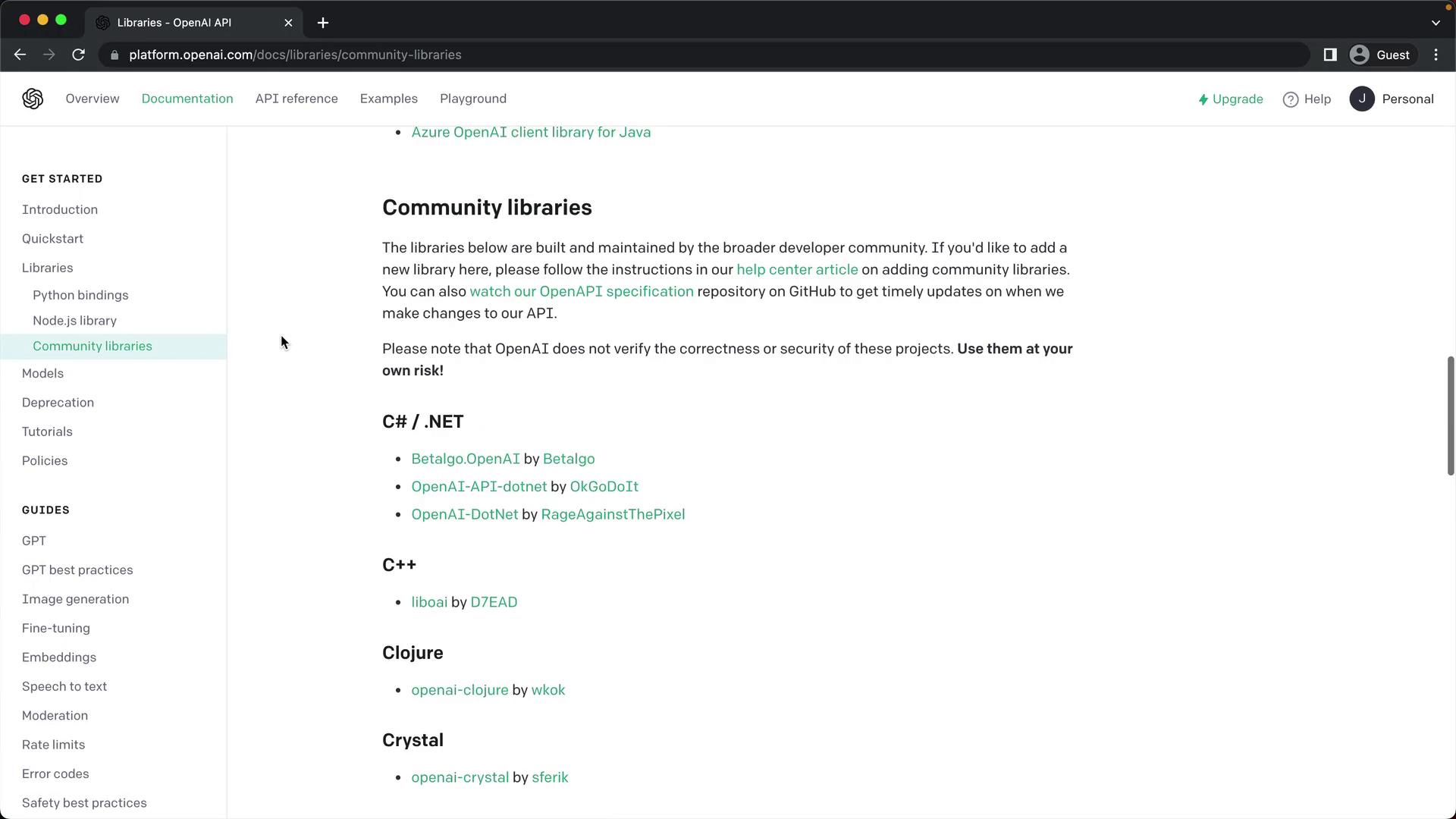Mastering Generative AI with OpenAI
Getting Started with OpenAI
OpenAI API and Libraries
Programmatic access to OpenAI’s models enables seamless integration of GPT-powered features into your applications. In this guide, we’ll cover how to install and use the official OpenAI SDKs for Python and Node.js, leverage the OpenAI CLI for quick API operations, and explore community-maintained libraries.
Official SDKs
For the latest SDKs, visit the OpenAI documentation under “Libraries”. Below is a quick overview:
| Language | Package | Install Command | Documentation |
|---|---|---|---|
| Python | openai | pip install openai | Python SDK Guide |
| Node.js | openai | npm install openai | Node.js SDK Guide |
Python SDK
Installation
pip install openai
This single package provides both:
- The Python client library (
import openai) - The
openaiCLI tool for tasks like generating completions or fine-tuning models
Warning
Never commit your OPENAI_API_KEY in plaintext. Always load it from an environment variable or a secrets manager.
Quickstart Example
import os
import openai
# Load your API key securely
openai.api_key = os.getenv("OPENAI_API_KEY")
# Request a chat completion
response = openai.ChatCompletion.create(
model="gpt-3.5-turbo",
messages=[{"role": "user", "content": "Hello, world!"}]
)
print(response.choices[0].message.content)
Using the CLI
openai api chat_completions.create \
-m gpt-3.5-turbo \
-g user "Hello, world!"
Note
The openai CLI supports commands for completions, embeddings, file uploads, and fine-tuning. Run openai --help to explore all options.
Node.js SDK
Installation
npm install openai
Basic Usage (JavaScript)
import OpenAI from "openai";
const openai = new OpenAI({
apiKey: process.env.OPENAI_API_KEY
});
async function chat() {
const response = await openai.chat.completions.create({
model: "gpt-3.5-turbo",
messages: [{ role: "user", content: "Hello, world!" }]
});
console.log(response.choices[0].message.content);
}
chat();
For TypeScript examples and advanced configurations, see the Node.js SDK Guide.
Community Libraries
OpenAI’s documentation also links to community-maintained libraries across various languages. Use these with caution, as they are not officially supported:

Next Steps
Now that you have the SDKs installed and the CLI at your fingertips, you’re ready to configure your development environment and build your first Python application that calls the OpenAI API.
Links and References
Watch Video
Watch video content